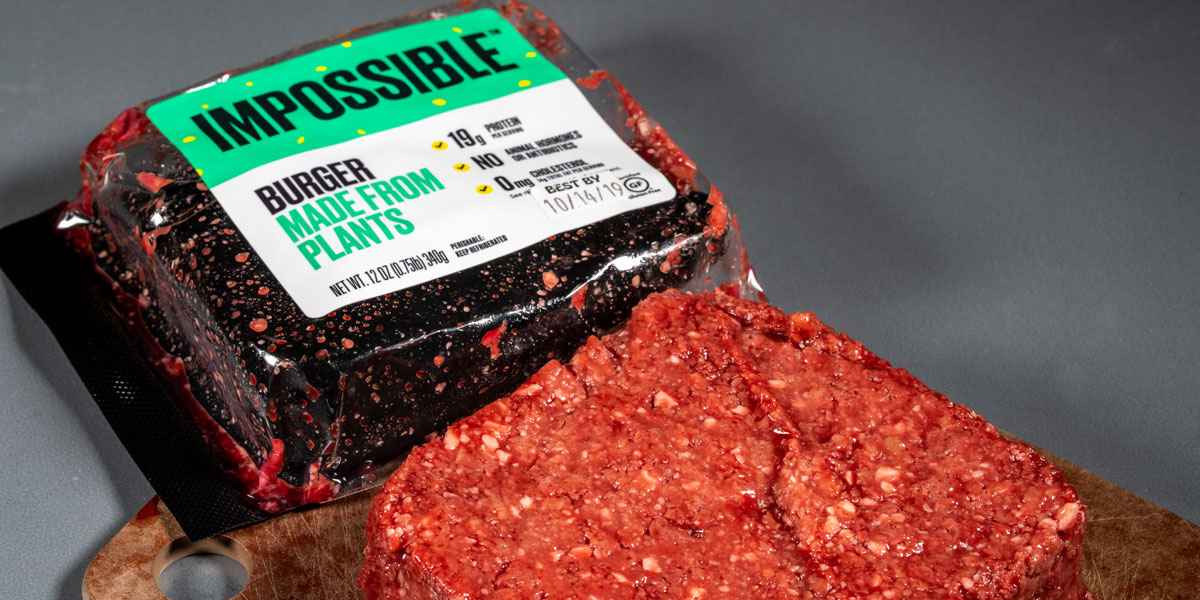
What will EFSA make of Impossible Foods' rat feeding study?
Impossible Foods Inc. has applied to start selling its plant-based GMO-containing burgers in the European Union as it looks to expand outside the US and Asia, according to a report for Bloomberg.
The maker of the Impossible Burger filed an application to market soy leghemoglobin (SLH), the iron-containing molecule made with a genetically engineered yeast, according to the EU’s food safety authority EFSA. SLH is a key additive for helping replicate the richness of meat flavours.
It will be interesting to see what EFSA makes of the rat feeding study that Impossible Foods commissioned on the genetically modified (GM) yeast-derived SLH. Rats fed SLH developed unexplained changes in weight gain, changes in the blood that can indicate the onset of inflammation or kidney disease, and possible signs of anaemia.
Impossible Foods appears unfazed by the findings. “Our intention is to sell plant-based meat in every single region of the world,” Rachel Konrad, a spokeswoman for the company, told Bloomberg. “We will meet or exceed all food-safety regulations in every single region of the world, including Europe.”
Impossible Foods' rat feeding study is only 28 days long, while European law requires a 90-day test. It's still unclear whether Impossible Foods has carried out this longer test to meet European requirements.
Fake meat: A crowded market
Genetically modified foods and labelling are more tightly regulated in the EU than in the US, which could mean approval could take time, the Bloomberg report says. If it gets the green light, the Impossible Burger will join an increasingly crowded market for fake meat in Europe. Beyond Burger has already made inroads in supermarkets on this side of the Atlantic, and is featured at racing-driver Lewis Hamilton’s new plant-based burger chain.
Outside the US, Impossible Foods can be found in Singapore, Hong Kong and Macau. The EU application was filed on September 30 with the Dutch government under the EU’s regulation on genetically modified food and feed, and passed onto EFSA, filings show.
The Redwood City, California-based company also has applications pending in Australia, New Zealand and Canada, according to the filings.
Impossible Foods wants to import finished food products containing heme and won’t be manufacturing the ingredient in the EU, it said in the filing. It has also filed a parallel application for the use of heme under the regulation on flavourings and food ingredients.
Since seeking approval for the GM products can be a complicated process, it may make more sense for Impossible Foods to use a non-GM ingredient in the EU, according to Katia Merten-Lentz, a partner at Keller and Heckman LLP in Brussels.
“The spirit of the European countries is not really against innovation, but, for sure, not in favour of GMOs,” she said in a phone interview. “A GMOs ingredient which appears on the ingredients list could be a bad start in terms of marketing. If I were Impossible Foods, I would do my best to change the heme [SLH] ingredient.”
The new-generation Impossible Burger as sold in the US also contains GM soy, which in Europe would have to carry a GMO label. However, Impossible Foods could replace this with non-GM soy for the European market, in line with the practice of most retailers on the continent.










